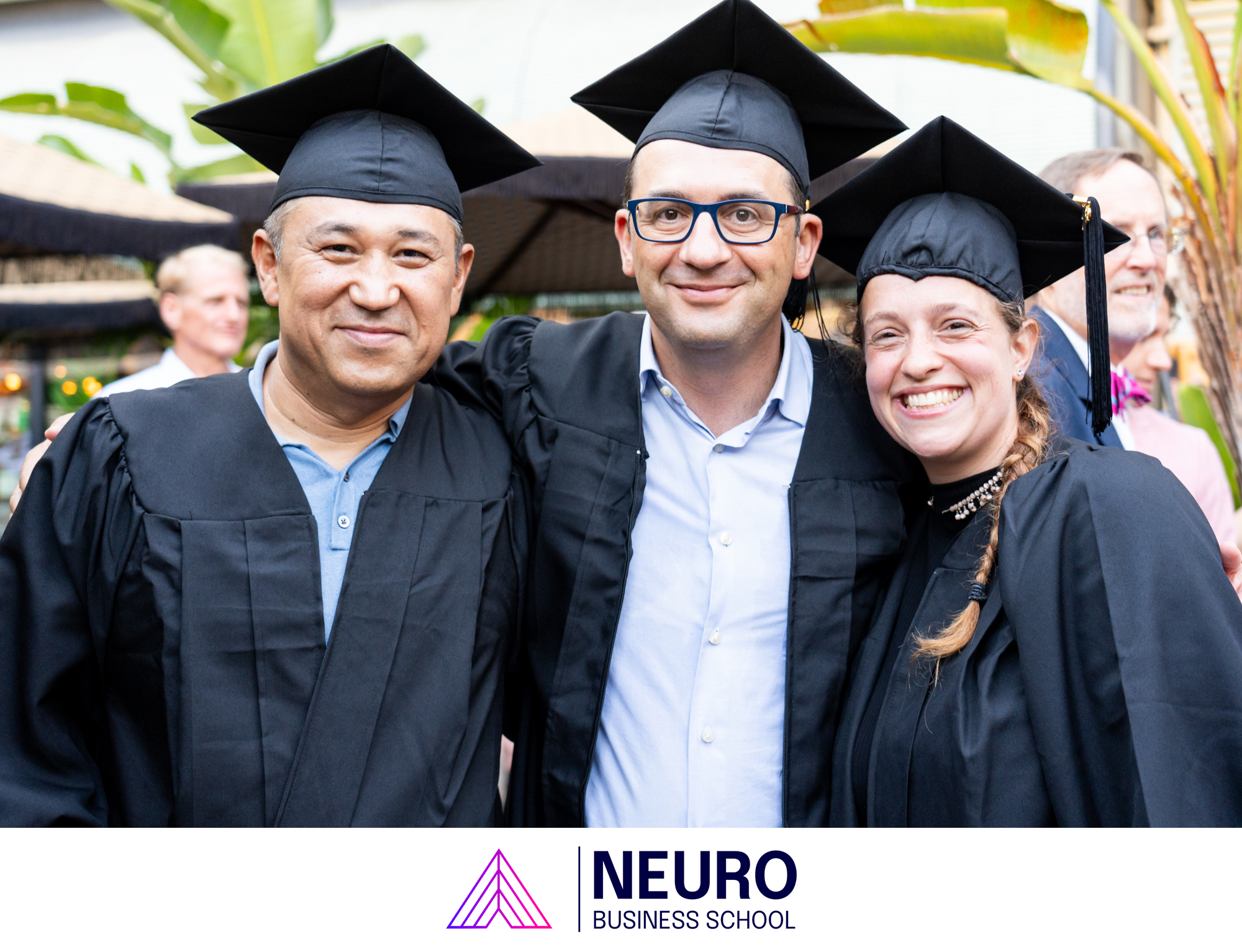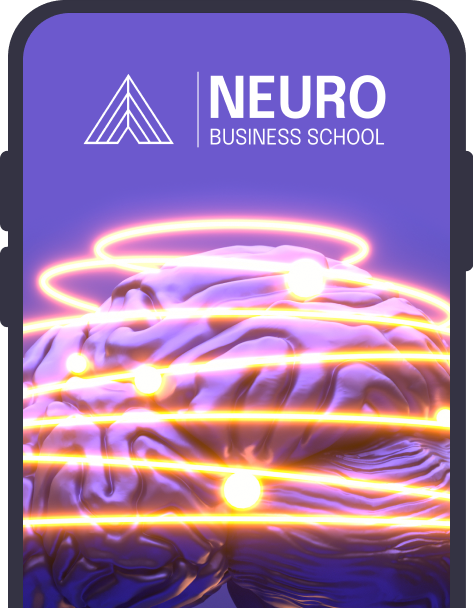
Have you considered that many of the purchases you make aren’t always logical? This happens because a chemical switch is triggered in your brain by smells, colors, or sensations. Companies like Starbucks and Zara use this to their advantage by leveraging neuroscience and pushing you (95% of the time) to make purchases without much thought. And we’re not saying this, but studies from the Consumer Neuroscience Institute.
If you don’t believe us, look at the practical example of vanilla, a widely used resource in stores, which, according to data from Oxford University, the smell alone can increase sales by up to 32%… But this isn’t a trick; behind this sometimes impulsive act lies something called Neuroscience and Neuromarketing, two disciplines capable of helping you understand brain patterns and sell more.
Ready to learn about neuroscience, how consumers’ brains work, and what messages trigger their desire to buy? Plus, we’ll tell you about the best books to help you sell like never before in the digital age. Without further ado, let’s get started!
What is neuroscience?
The general concept would be: it’s a branch of study that analyzes how the brain and nervous system work, their functions, and their structure, so we can understand what lies behind emotions, behaviors, sensations, or thoughts.
While psychology studies what can be observed, cognitive neuroscience uses activity sensors and magnetic resonance imaging to understand what happens inside the skull when someone performs an action, such as choosing a product or hearing a slogan, for example.
Consumer Neuroscience
This is one of the branches of neuroscience that focuses on understanding how the brain responds when exposed to certain stimuli related to consumption, evaluating the rational process, but especially the unconscious and emotional processes.
Yes! It’s the discipline that can predict purchasing decisions, as it studies how you respond to advertising, which colors or scents make you want to buy, or which product design is most likely to engage you.
For this, they use tools such as functional magnetic resonance imaging, eye tracking, and electroencephalography, which allow specialists to observe responses in different areas related to reward and emotions.
Here’s a real-life example: in 2014 and then again in 2018, Coca-Cola created a campaign called “Share a Coke.” This campaign featured bottles bearing personal names, such as Carlos, María, Daniel, and so on. But behind this lies neuroscience, the discipline that explains that seeing our name on a product activates the nucleus accumbens, the brain area linked to pleasure and personal identity.
Knowing this, the brand didn’t have to change the product; it simply added a differentiating yet winning effect to its campaign, which made its consumers feel exclusivity and emotional connection, resulting in a 7% increase in sales globally that year, according to data from the Neuromarketing Science & Business Association.
How is neuroscience applied to neuromarketing?
Neuroscience and neuromarketing are linked; the former feeds the latter, providing real-time data on how a prospect perceives or reacts to specific stimuli. These stimuli are used to create marketing campaigns that are irresistible to customers.
For example, thanks to neuroscience, we know that aromas, textures, and sounds evoke positive memories. In neuromarketing, this has been applied with the Proust effect, which consists of using aromas to activate the hippocampus, increasing customer retention in a specific store or business by up to 29%.
Likewise, brands that have applied these methodologies include Frito-Lay, which is known to have conducted biometric studies to detect which packaging designs generate positive emotions, and Hyundai, which has applied encephalography to understand how its customers respond to prototype vehicle designs, helping them make adjustments that improve the perception of their cars.
The truth is that neuroscience and neuromarketing together allow any business owner to stop relying on surveys (where customers sometimes lie) and instead access real data derived from inevitable biological reactions.
In the following table, you can see this incredible relationship in more detail:
| Area of Neuroscience 🧠 | Neuromarketing Technique 🎯 | Practical Example 📱 | Objective 🎯 |
|---|---|---|---|
| Neuroimaging (fMRI, EEG) | Measure brain activity in response to stimuli | Analyze reaction to a Coca-Cola ad | Identify unconscious emotions (e.g., nostalgia) |
| Eye Tracking | Track eye movements | Map which areas of a packaging consumers look at first | Optimize design to capture attention |
| Biometrics (GSR, Heart Rate) | Measure physiological responses | Test reaction to high prices on screen | Detect stress or excitement in response to offers |
| Neurolinguistics | Language analysis that activates the brain | Use words like “free” or “exclusive” | Activate reward system (dopamine) |
| Associative Memory | Stimuli that evoke memories | Background music in ads (e.g., songs from the 90s) | Create emotional connections with the brand |
| Neuroeconomics | Study how purchase decisions are made | “Only for 24 hours” offers | Exploit fear of missing out (FOMO) |
| Mirror Neurons | Content that generates empathy | Ads with human stories (e.g., families) | Foster identification with the brand |
5 Interesting Neuroscience Books That Will Help You Sell
According to Forbes, 68% of successful entrepreneurs read at least 5 books a year related to their industry to acquire new knowledge and stay up-to-date.
If your goal is to learn how to sell, or to sell more, these 5 books presented here will be your practical guide to understanding how to activate desires, understand what makes people react, and how to overcome objections like a pro.
- Sell to the Mind, Not to People: This book by Jurgen Klaric will give you the tools to shift your focus from selling with rational arguments to focusing on their subconscious to stand out in a competitive market.
- The Perfect Sale: by Cesar Piqueras, offers a wide range of neuromarketing techniques with effective sales techniques, learning how to use neolinguistic programming to reach the consumer’s mind.
- The Buyer’s Brain: This wonderful work by Patrick Renvoisé and Christope Morin explains how emotions and language activate the consumer’s primitive brain, giving you ideas on how you can create messages that connect with your customers’ minds.
- Brainfluence: With easy-to-digest information, author Roger Dooley gives you 100 different ways, based on neuroscience and neuromarketing data, to convince and persuade your customers, helping you position your products or services and attract buyers naturally.
- The Buying Brain: This book, written by neuroscientist A.K. Pradeep, will give you the foundation to understand how consumers’ brains process packaging and advertising, and how you can design strategies with case studies from Microsoft, Ford, and Coca-Cola to back up the examples.
As you can see, neuroscience and neuromarketing are the key to transforming strategies into concrete sales.
If you want to stop guessing and start implementing strategies that Amazon and Netflix use, but that very few teach, enroll in our Neuromarketing Master’s Degree, where you’ll learn scientifically validated techniques that will make you the best neurostrategist in your niche.
References
- Araya-Pizarro, Sebastián C., & Espinoza Pastén, Laura. (2020). Aportes desde las neurociencias para la comprensión de los procesos de aprendizaje en los contextos educativos. Propósitos y Representaciones, 8(1), e312. https://doi.org/10.20511/pyr2020.v8n1.312
- Cárdenas, G. G. (2019). El neuromarketing, como herramienta efectiva para la educación en las ventas y la publicidad. Revista Latina de Comunicación Social, (74), 1173-1189.
- Brime, R. B. (2018). Cómo vender al cerebro: Neuromarketing aplicado. Roberto Blanco Brime.




